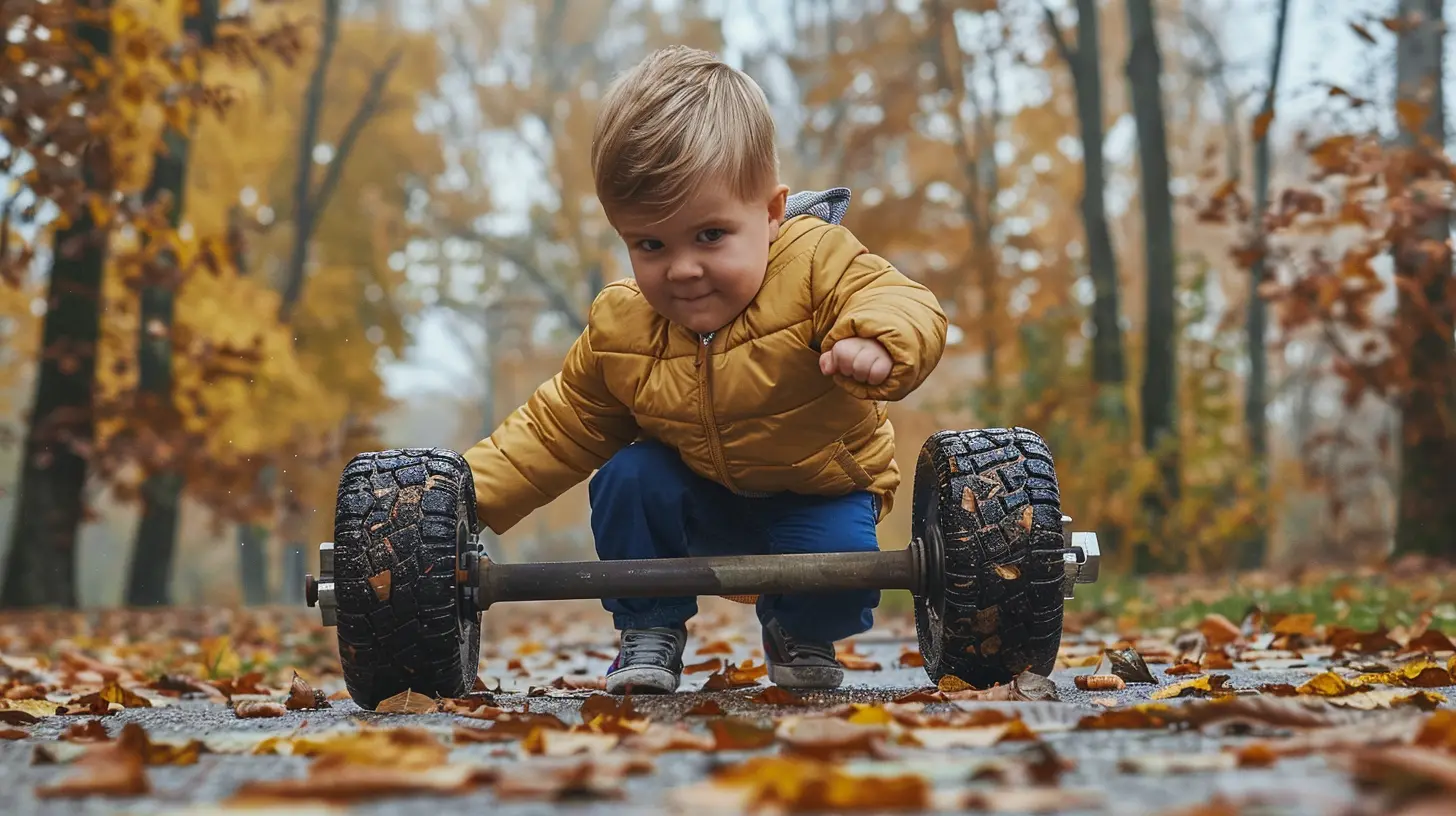How to Help Children Set Goals and Achieve Them
8 October 2025
Every child has dreams—big, small, and everything in between. Some want to be astronauts, others dream of becoming artists, and some just want to learn to ride a bike without training wheels. As parents, our role is to guide them in turning those dreams into achievable goals.
But let's be honest—goal-setting isn’t always easy, even for adults! So, how do we teach kids this valuable skill without overwhelming them? The key lies in making the process fun, simple, and rewarding.
In this article, we'll dive into practical ways to help children set goals and achieve them, instilling confidence and resilience along the way.

Why Goal-Setting is Important for Kids
Setting goals isn’t just about accomplishing tasks—it shapes how kids view challenges and opportunities. When children set and achieve goals, they develop:- A sense of purpose – Helps them understand what they truly want.
- Confidence – Teaches them they are capable of progress.
- Perseverance – Shows them that setbacks are part of success.
- Time management skills – Encourages planning and prioritization.
- Self-discipline – Instills commitment and responsibility.
Simply put, goal-setting gives kids a roadmap for success—not just in childhood, but throughout their lives. 
1. Start with a Conversation
Kids might not naturally think in terms of "goals." They focus on what excites them in the present moment. So, instead of introducing the idea formally, have a friendly chat about what they love doing or what they wish they could do better.Ask questions like:
- "What’s something new you’d love to try?"
- "Is there something you want to get better at?"
- "What's a challenge you’d love to conquer?"
This gets them thinking about personal ambitions, making goal-setting feel like an exciting adventure rather than a chore. 
2. Make Goals S.M.A.R.T.
You’ve probably heard of S.M.A.R.T. goals before, and guess what? They work wonders for kids too!What are S.M.A.R.T. goals?
- Specific – The goal should be clear and well-defined.- Measurable – There should be a way to track progress.
- Achievable – It should be realistic based on their abilities.
- Relevant – The goal should matter to them, not just to you.
- Time-bound – There should be a deadline to keep motivation high.
For example, instead of saying, “I want to be better at math,” a S.M.A.R.T. goal would be:
“I will practice multiplication for 15 minutes every day for the next month to improve my math skills.”
Breaking goals down this way makes them easier to follow and accomplish. 
3. Write It Down
There’s something magical about writing down a goal—it transforms an idea into something tangible. Encourage your child to write their goal in a notebook, on a whiteboard, or even design a fun "Goal Poster" to hang in their room.Better yet, let them decorate it with stickers, drawings, or bright colors! When kids see their goals daily, they’re more likely to stay focused and motivated.
4. Break Big Goals into Smaller Steps
A massive goal can feel overwhelming for a child. Instead of setting one huge target, break it into bite-sized pieces.For example, if your child dreams of reading a 300-page book, help them set smaller milestones:
- Read 10 pages a day
- Finish one chapter this week
- Complete half the book by the end of the month
Each small victory builds momentum, making the big goal feel more achievable.
5. Celebrate Progress, Not Just the End Result
Kids thrive on encouragement. When they reach a small milestone, celebrate it! A high-five, a sticker chart, or a simple "I'm so proud of you!" can do wonders for motivation.Remember, success isn't just about reaching the final goal—it's about the growth and effort along the way. Help kids see that progress itself is a victory.
6. Teach Them to Overcome Obstacles
Let's be real—life doesn’t always go according to plan. Kids will face setbacks, distractions, and moments of frustration. Instead of seeing obstacles as failures, teach them to view challenges as part of the journey.When they hit a roadblock, ask:
- "What can we do differently to keep going?"
- "What did you learn from this setback?"
- "How can we adjust your plan?"
By developing this mindset early, children learn resilience—a skill that will benefit them for a lifetime.
7. Be Their Biggest Cheerleader
Kids look up to their parents more than we realize. If they see you setting and working toward your own goals, they’ll naturally want to do the same.Be a goal-setting role model by sharing your own experiences:
- Talk about a goal you’re working on.
- Share how you handle challenges.
- Show them that persistence pays off.
When kids see goal-setting as a normal part of life, they’ll embrace it with confidence.
8. Make It Fun and Rewarding
Let’s be honest—kids love fun. If goal-setting starts to feel like a dull task, they’ll lose interest. Inject excitement into the process by:- Creating a reward system (stickers, a small treat, extra playtime)
- Gamifying their progress (turn it into a challenge or competition)
- Using visual progress charts (so they can see their achievements grow)
The more enjoyable the process, the more likely they’ll stick with it!
9. Encourage a Growth Mindset
A growth mindset teaches kids that ability isn’t fixed—they can improve with effort. Instead of saying, "I'm just not good at this," help them say, "I can't do this... yet!"Reframing struggles this way helps children see obstacles as opportunities for learning rather than signs of failure.
Encourage phrases like:
- "I will keep practicing."
- "Mistakes help me learn."
- "Every effort brings me closer to my goal."
When kids believe in their ability to grow, they become unstoppable.
10. Reflect and Adjust
Once your child reaches a goal (or even if they don’t), take time to reflect. Ask them questions like:- "What did you enjoy about this process?"
- "What was challenging?"
- "What would you do differently next time?"
This reflection helps them understand their own learning process and improves their future goal-setting skills.
Final Thoughts
Helping children set and achieve goals isn’t just about guiding them toward accomplishments—it’s about equipping them with skills that will shape their future. From perseverance to self-discipline, the lessons they learn today will serve them for life.So, start small, make it fun, and celebrate every step along the way. Before you know it, you’ll be watching your child confidently chase their dreams—one goal at a time.
all images in this post were generated using AI tools
Category:
Building ConfidenceAuthor:

Zelda Gill
Discussion
rate this article
1 comments
Wyatt McGowan
Thank you for sharing such valuable insights! As a parent, I often find it challenging to guide my children in goal-setting. Your tips are practical and encouraging, and I can't wait to try them with my kids!
October 16, 2025 at 3:20 AM

Zelda Gill
Thank you for your kind words! I'm glad you found the tips helpful. Wishing you and your kids great success in goal-setting!


